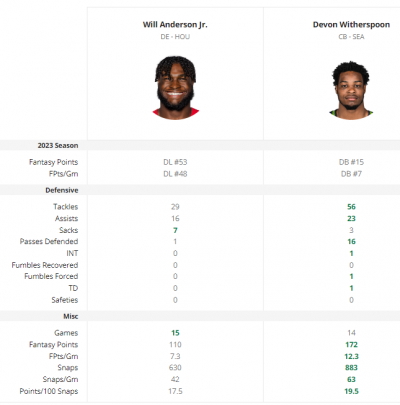We're talking about PFF grades, which are based on the opinions of people desperate enough for fifty bucks per complete game that they're willing to waste at least six hours every Saturday watching and charting college-football games in addition to the hours they spend on NFL-game evaluation.
I'm not saying there isn't useful information that could be extracted from PFF grades if you had nothing else, but I would be utterly shocked if it turned out that PFF grades are a leading indicator of, well, anything at all. I suspect they're much more trailing indicators of player stats and reputations. Since player stats and player reputations can be obtained directly via other means, PFF grades are nothing but redundant trailing indicators.
"PFF employs over 600 full or part-time analysts, but
less than 10% of analysts are trained to the level that they can grade plays. Only the top two to three percent of analysts are on the team of “senior analysts” in charge of finalizing each grade after review."
1) You are making assumptions about the roles of part-time employees and applying them to the entire company.
2) PFF grades over a trailing period are good predictors of their future PFF grades—on par with EPA, QBR, etc.

x.com
3) The real issue is that most people don't understand how to read PFF grades. For example, 50 is the normalized expected average—such that a player average of 50 over the season would be neither a positive nor negative to their team. Thus, the further away from 50 in the positive direction, the more impactful the player.
A quality starter typically falls around 65 (This is roughly Jarran Reed's career average), so Murphy being a 68 is actually a good sign. Again, though, the sample size from one game is mostly useless.

